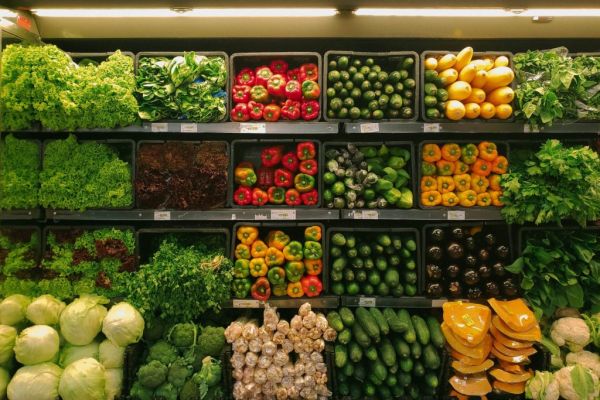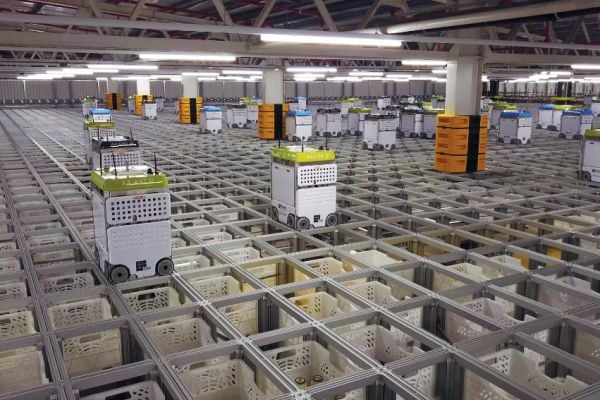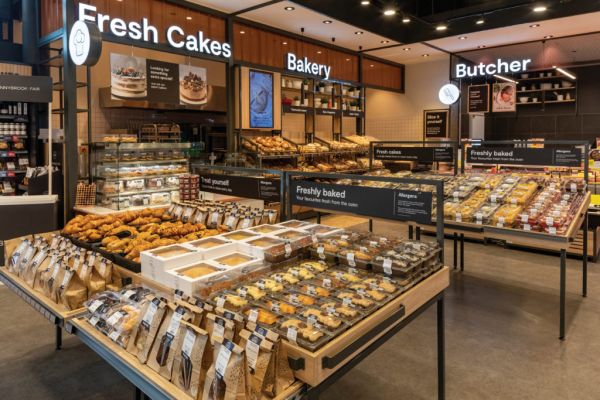Supply chain disruptions, labour shortages and similar issues have pushed many industries to embrace automation. Revolutionized's Emily Newton reports.
To date, the grocery sector hasn’t seen much in the way of robotics adoption, but this is starting to change. Grocery store automation is becoming increasingly common, and understandably so.
Despite the industry’s historical lack of automated technologies, it has much to gain from these systems, with advantages that become all the more evident as more businesses embrace technology. Here are five of the most significant benefits of supermarket automation.
1. Raise Efficiency
The most obvious advantage of grocery store automation is its impact on productivity. Routine tasks like stocking shelves and mopping floors are crucial but take up time employees could otherwise spend helping customers. Automating these processes lets you accomplish them faster while ensuring they don’t take away from customer-facing tasks.
On top of letting employees focus on customers, automated systems are typically faster than humans when it comes to monotonous tasks. Consequently, grocery stores can see substantial improvements after implementing these systems.
Automation can streamline the customer experience, too. Automated checkout systems can charge people’s cards as they exit, bypassing a checkout booth entirely and eliminating queues. Even before the pandemic, 83% of UK shoppers left stores without buying anything because of long lines, so this efficiency boost can directly impact sales.
2. Mitigate Labour Issues
Relatedly, automated systems can help lessen the impact of ongoing labour shortages. Many retail and supply chain businesses are struggling to find and keep workers, creating many other challenges. Automation can help by expanding what the existing workforce can accomplish.
Automating time-consuming tasks like restocking lets employees do more pressing, value-added work at the same time. Consequently, you can do things quicker despite having fewer workers. Some employees may even become more productive when they don’t have to do repetitive tasks they don’t enjoy.
Of course, grocery stores still need human workers to interact face-to-face with customers and handle more nuanced tasks. Automation doesn’t replace these roles but gives employees more time and energy to spend on them. The back-office productivity boost can also help stores keep pace with demand as they seek more new hires.
Read More: 7 Ways Food Technology Is Transforming The Global Food Industry
3. Improve Safety
Supermarket automation can also make grocery stores safer for employees and customers. Automated machines can handle the most hazardous work, like carrying heavy objects, keeping workers away from things that could endanger them. Similarly, automated safety reporting tools have reduced workplace injury costs by 35% in some situations.
Automated cleaning systems can help prevent slips and falls. Robots can detect spills and clean them faster than it would take an employee to grab a mop and do it themselves. As a result, automation minimises slip hazards, protecting shoppers and workers.
Many stores realised automation’s potential to reduce health-related hazards amid the COVID-19 pandemic’s peak. Cleaning robots equipped with ultraviolet lights and similar disinfectants can sanitise surfaces to minimise risks from shared areas. Automated checkouts can provide health-conscious consumers with a way to avoid face-to-face contact and related airborne germ risks.
4. Inform Timely, Accurate Orders
Grocery store automation can also help prevent stock shortages and delays. The more you automate a store, the more data you’ll collect on its operations. Automated warehouse or restocking solutions provide information about stock levels. You can then create more timely and accurate ordering schedules.
This hard data over stock levels and purchasing habits offers more insight into what stores need and when they need it. Advanced solutions can even use this information to prepare for the future. Some places have started using data analytics to predict customer shopping behaviour and order new items accordingly.
Software automation can even automate the ordering process itself. Automated software could analyse stock levels and usage trends to customise and order new shipments automatically, ensuring stores restock before they run out.
5. Optimise BOPIS Operations
Supermarket automation can optimise the ordering process for customers, too. Buy-online-pickup-in-store (BOPIS) programmes have surged amid the pandemic, more than doubling in 2020, and will likely see continued use among consumers. BOPIS is convenient even when health risks aren’t a major concern, and automation takes that convenience further.
Automated stock solutions can ensure BOPIS systems have real-time information about stores’ current inventory levels. That way, online shoppers can avoid ordering out-of-stock items, a common but frustrating experience. Similarly, automation’s impact on ordering and restocking can help ensure BOPIS shoppers always find what they want.
Automation’s impact on efficiency also means workers have more time to respond to BOPIS orders. As a result, online shoppers will wait less, leading to higher satisfaction and stronger brand loyalty.
Grocery Store Automation Is the Next Step Forward
Automation has already swept across industries like manufacturing, and grocery stores are next. It’s the next step as the sector seeks to overcome its current challenges.
These five benefits of grocery store automation can help any store improve its operations. As this technology is refined and the possibilities expand, new advantages and use cases will arise, too. If the sector can capitalise on this movement, it could forever transform the sector for the better.
© 2022 European Supermarket Magazine – your source for the latest technology news. Article by Emily Newton, Revolutionized. Click subscribe to sign up to ESM: European Supermarket Magazine.














